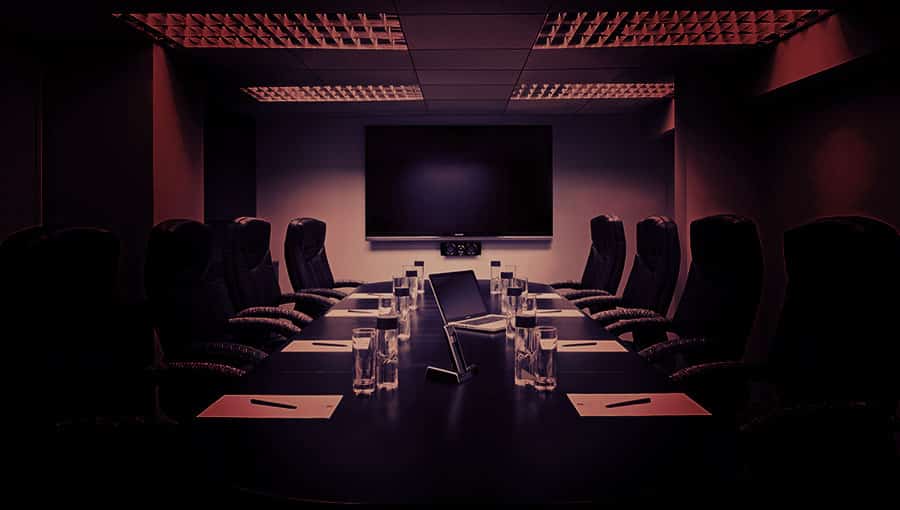5 Ways To Make Your Meetings More Productive

Nearly every organization relies on meetings to keep people informed and to keep projects moving forward. But the value of meetings in most organizations is dubious, and sometimes it seems like meetings are the default activity rather than a tool of productivity.
If you’ve ever walked out of a meeting and felt unsure why the meeting occurred and what value was gained, then you know what I’m talking about.
Fortunately, there are five ways to fix meetings – to ramp up their value and ensure that everyone gets value out of them.
- Every meeting needs an agenda, and everyone needs to see the agenda before the meeting
All too often, meetings are scheduled without an agenda, which allows the discussion to be determined by the most pressing issues or the most vocal on the team. Don’t allow meetings to become hijacked by some external agenda; create an agenda for the meeting.
Once the agenda is created, shared it with the team before the meeting. This helps to establish the topic of the meeting and ensures that everyone has time to prepare for the meeting.
Once the meeting starts, make sure you stick to the agenda. The agenda is there as a way to keep the meeting on track but it’s also an opportunity to establish an environment of trust and safety. If people are able to anticipate what the meeting will be about, they’ll be able to prepare and contribute.
- Use meetings to discuss, not disseminate
Meetings should not be the place where one person stands at the front and talks, sharing information with everyone else. Meetings should be a place of discussion, not dissemination. Use technology like video or email, or use company-wide events, to disseminate information. Use meetings for discussion, interaction, and collaboration. Invite people to share their ideas and build on other ideas.
Set the expectation that people should show up prepared and energized. Specifically, they need to show up to a meeting on time and fully prepared to discuss whatever is on the agenda, and they need to bring a level of energy to the meeting that will make the meeting lively. Meetings shouldn’t be an interruption to the energy and flow of the day – it should contribute. (Yes, it is possible to have people leave your meetings more energized than when they showed up!)
- Make sure everyone contributes
When several people gather together, social factors come into play, which means the more outgoing people on your team could control the discussion in the meeting. But remember, just because someone has a good idea that can grow your business, doesn’t necessarily mean that they feel able to share – perhaps because of their perceived social position or maybe because they feel that they shouldn’t interrupt the discussion.
The meeting leader or moderator should ensure that everyone has a chance to participate in every discussion. This is more important now more than ever before when technology allows people to participate in meetings over the phone or online.
Not only should the meeting leader pay attention to this, but you’ll also ensure more sharing when you.
- Build a culture of trust, engagement, and safety
This is a long-term play in your business and will positively impact so many other aspects of your business; and you’ll definitely see the value of this kind of culture in your meetings. When all employees trust each other, are fully engaged, and feel safe, then meetings became dramatically more useful because everyone shows up with the attitude that all meeting attendees have something valuable to share.
- Allow (and encourage) conflict
Perhaps the most surprising (and controversial) point of this entire list is this point – allow and even encourage conflict in your meetings.
Most organizations work hard to eliminate conflict under the misguided belief that conflict creates hard feelings, and that productive work only happens when everyone agrees. But this is not true. Conflict is very healthy for an organization. Of course leaders need to manage the conflict and ensure that it remains healthy, productive, positive, and professional and does not descend into name-calling and personal attacks.
Healthy conflict creates discussion, exposes people to new approaches, and forces people to back up their ideas with evidence. During meetings, ask for ideas, then look for people who disagree, and ask both sides why they believe what they do.
Implement a safe word for your conflict – if the conflict in a meeting starts to become too much (too personal, too heated, etc.) then someone can call out the safe word and the entire meeting comes to a complete stop and everyone leaves; the meeting is reconvened later after everyone has a chance to cool down.
Summary
Across corporate America, meetings have become very silly: there are often too many of them, and they have decreasing productive value.
Using these five strategies, you can re-energize your meeting – and your business – with productivity… and your team will start looking forward to productive meetings again.
[Written by Mike Agugliaro]
Bring the best of the CEOWORLD magazine's global journalism to audiences in the United States and around the world. - Add CEOWORLD magazine to your Google News feed.
Follow CEOWORLD magazine headlines on: Google News, LinkedIn, Twitter, and Facebook.
Copyright 2025 The CEOWORLD magazine. All rights reserved. This material (and any extract from it) must not be copied, redistributed or placed on any website, without CEOWORLD magazine' prior written consent. For media queries, please contact: info@ceoworld.biz








